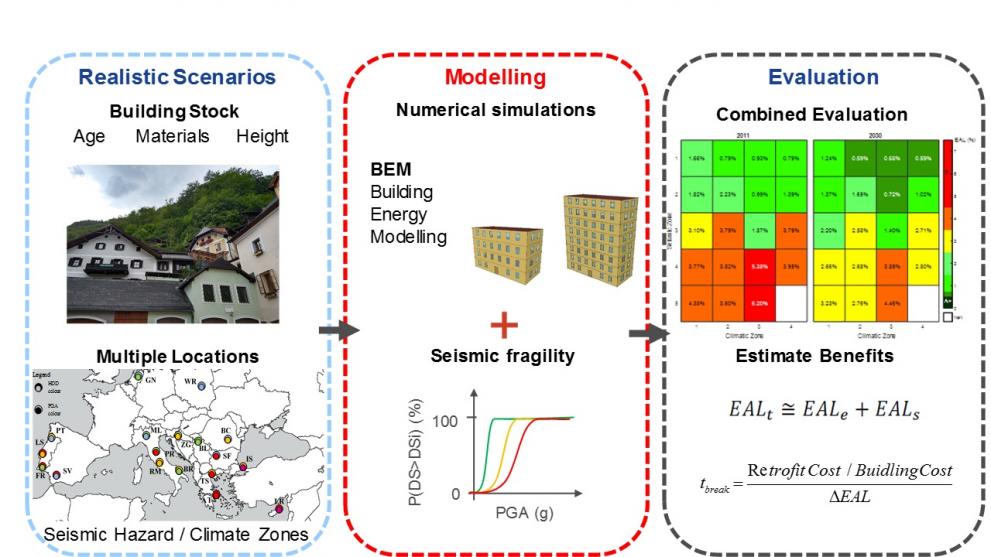Combined seismic and energy retrofitting of the existing EU buildings is potentially beneficial for all earthquake-prone communities and the general society by reducing building energy consumption, operation costs, and greenhouse gas emissions. House owners and governments renovating buildings of societal or cultural importance will benefit from reduced costs of the proposed retrofit concepts compared to separate seismic and energy retrofit interventions. This research will also help the construction industry: developing appropriate retrofit strategies and policies to incentivise building upgrades will increase demand for retrofit specialists.
The explored innovations can significantly reduce the costs of meeting both seismic and energy performance requirements simultaneously. Millions of buildings will need hybrid retrofitting per year in the EU to reach the 2‒3% annual renovation targets. The research aims at prolonging buildings’ lifetime with respect to the EU environmental goals: minimising the drain on non-renewable construction resources and preventing demolition waste.

A common approach for building performance classification is proposed to assess the impact of the iRESIST+ retrofit scheme on the renovation of the EU building stock. The methodology will allow to assess whether energy efficiency and disaster-resilient practices can be integrated. This approach was investigated by numerical modelling of the energy and seismic performance of European buildings. Initially, 20 case study locations across Europe have been selected, representing a wide range of seismic hazard levels and climatic demands.
Reductions up to 32% in Primary Energy consumption for heating and cooling, as well as reductions up to 38% in terms of CO2 emissions, could be achieved when retrofitting 3% of the existing building stock annually with the proposed retrofit scheme.
Additionally, it was found that already in regions of moderate seismicity, combined interventions present financial benefits over energy retrofitting alone. Finally, in zones in which seismic retrofitting is essential due to higher seismic activity, performing the combined retrofit at once instead of separate interventions showed a significant reduction in the intervention’s payback period.

